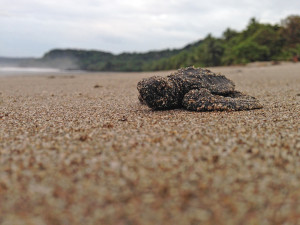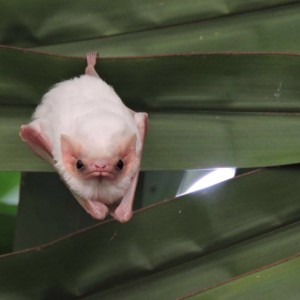Refugio Nacional de Vida Silvestre Romelia is a wildlife refuge in Montezuma on the Nicoya Peninsula. Created on November 24th, 1998, to contribute to the conservation of the Tempisque Conservation Area (ACT, from its acronym in Spanish Area de Conservacion Tempisque).
The refuge stemmed from an initiative of Albert Ingalls and Gitza Gatti, who followed a dream of conservation for land that once was their home and the birthright of their children. The land, now the Refugio Nacional de Vida Silvestre Romelia (category mix), contributes to the Area de Conservacion Tempisque. It is an important part of the peninsular biological corridor (Cabo Blanco Absolute Reserve, Curú Mixed Wildlife Reserve, Karen Morgensen Reserve, Nicholas Wessberg Reserve, and the Romelia Mixed Wildlife Refuge). It is adjacent to the Nicholas Wessberg Absolute Reserve, one of the country’s first and most valuable protected wild areas.
The land of the RMSV exudes beauty. It is a beachfront, bathed by rolling Pacific Ocean waves, guarded by iconic sea stacks and in-land nurtured by peaceful rivers and tranquil waterfalls. It is one of the peninsula’s last bastions of pristine wilderness. The RMVS is visited by tens of thousands of eco-tourists annually.
by peaceful rivers and tranquil waterfalls. It is one of the peninsula’s last bastions of pristine wilderness. The RMVS is visited by tens of thousands of eco-tourists annually.
This Refuge is approximately 224 Ha, 8349 m2 (SINAC, 2011). Within this territory are some distinct ecosystems: primary forest, secondary forest, riparian forest, and gallery forest. The avifauna includes more than 57
s
pecies of birds, 26 species of herpetofauna including, 13 reptiles and seven amphibians. There are also 26 species of mammals, including 11 types of bats.
The weather is characterized as humid, hot, and scorching. Annual precipitation is about 3,000 mm, distributed from May to December. Precipitation presents a deficit between July and August during the period known as “Veranillo de San Juan,” which lasts up to 70 days. The average annual temperature is between 24 and 27 C (75,2 to 80,6 F), with annual potential evapotranspiration of over 1710 mm. The aridity index is over 20%, and the hydric is between 40 and 60% (Herrera 1985 quoted in RMVS-Romelia—SINAC-MIAET, 2011).
Biodiversity
| CATEGORY | DESCIPTION | MAIN SPECIES |
| Vegetation | Area with influence from both Guanacaste dry forest and the Southern humid forest. | MahoganiCedar TempisqueLaurel |
| Bird Fauna | 365 individuals belonging to 57 species. | Bare- throated BellbirdTrogonLong-haired ManakinHorned Guan |
| Herpetofauna | 20 species, 13 reptiles, and seven amphibia. | Turtles |
| Mammals | 26 species of mammals, including 11 species of bats | DeerGreater GrisonGray-headed TayraSword-nose bat |
Our conservation efforts in the Nicoya Peninsula work hand in hand with the Costa Rica National Park System (SINAC), donations by our community, and the invaluable help of volunteers. Volunteers are the moving energy, working relentlessly with our team to protect this land and its wildlife; educate our community on the best sustainable practices. We do beach cleanups, ongoing sea turtles conservation investigations, bird counts, and more!